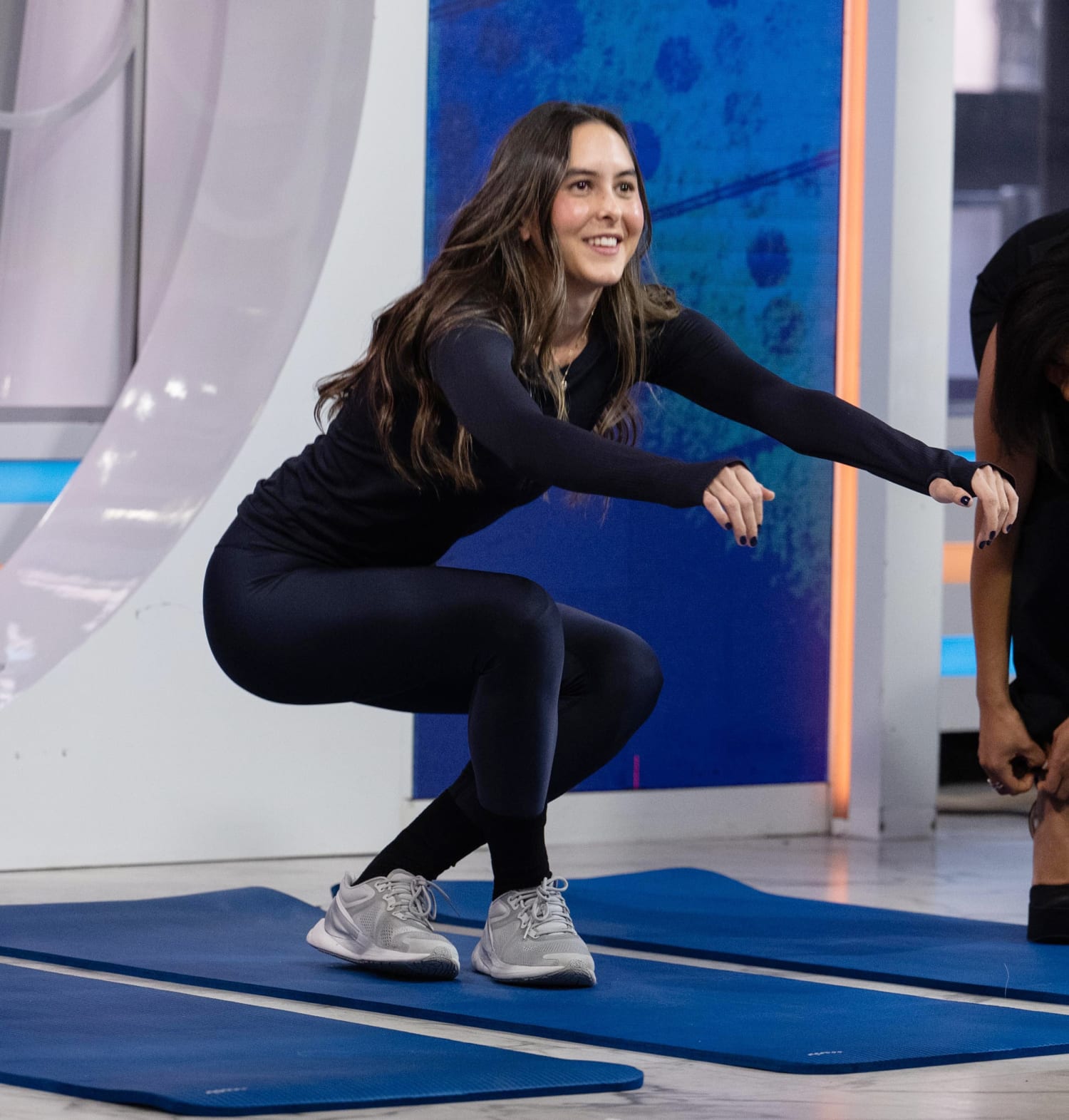People who struggle with this physical test are more likely to face health risks in the next six years.
We all wonder about how long we’ll live and what factors might influence our longevity. While there’s no magic formula to predict exactly how many years we have ahead, certain indicators can provide valuable insights into our health and lifespan.
Recently, a straightforward test has been gaining attention for its ability to predict longevity, especially for individuals between the ages of 51 and 80. Featured on the “Today” show, NBC News medical contributor Dr. Natalie Azar demonstrated the simple “sit-to-stand test” (also known as the sit-rising test or SRT) that could offer a glimpse into your future health.
The Sit-to-Stand Test Explained
The test is as uncomplicated as it sounds:
- Start Standing: Stand upright in a comfortable position.
- Sit Down Cross-Legged: Without using your hands or any other support, lower yourself to a cross-legged sitting position on the floor.
- Stand Back Up: From the cross-legged position, rise back to standing without assistance.
The key is to use only your legs and core muscles to control your movement. Avoid using your hands, knees, or any other part of your body to help you get up or down.

What Does the Test Measure?
This test evaluates multiple aspects of physical fitness that are crucial for longevity:
- Heart Health
- Balance
- Agility
- Core and Leg Strength
- Flexibility
By assessing these areas, the test can provide insights into your overall musculoskeletal fitness, which is a significant predictor of mortality in older adults.
Scoring the Test: How Did You Do?
You start the test with a perfect score of 10 points. Points are deducted each time you use a hand, knee, or other support to aid your movement.
Subtract 1 point for each of the following:
- Using a hand for support
- Placing a knee on the ground for support
- Using a forearm for assistance
- Placing one hand on your knee or thigh
- Using the side of your leg for support
For example: If you use your right hand to help lower yourself and then place a knee on the ground while standing up, you’d subtract 2 points, ending with a score of 8.
The Study Behind the Test
A 2012 study published by the European Society of Cardiology explored the correlation between the SRT score and longevity. Here’s what they found:
- Participants: The study involved 2,002 individuals aged 51 to 80, with 68% being men.
- Findings: Musculoskeletal fitness, as assessed by the SRT, was a significant predictor of mortality.
- Risk Levels:
- Those scoring 0 to 3 points were up to 6 times more likely to die within the study period than those scoring 8 to 10 points.
- Approximately 40% of participants with low scores died within 11 years of the study.
Dr. Natalie Azar summarized on the “Today” show:
“The study found that the lower the score, you were seven times more likely to die in the next six years.”
An optimal score is 8 points or higher. This emphasizes the importance of maintaining balance, flexibility, and agility as we age—not just focusing on cardiovascular health.
Why Is This Test Important?
The sit-to-stand test isn’t just about predicting mortality; it’s a reflection of your overall functional fitness. As Dr. Azar highlighted:
“As we get older, we spend time talking about cardiovascular health and aerobic fitness, but balance, flexibility, and agility are also really important.”
Functional fitness affects daily activities, reduces the risk of falls, and contributes to a better quality of life.
Considerations and Cautions
While the test offers valuable insights, it’s essential to approach the results with a balanced perspective:
- Age Factor: Naturally, older individuals might have more difficulty with the test, which can influence mortality risk.
- Existing Conditions: Injuries, disabilities, or chronic conditions may affect performance and aren’t accounted for in the test.
- Correlation vs. Causation: Dr. Greg Hartley, a Board Certified Geriatric Clinical Specialist, cautions:
“Frailty, strength, muscle mass, physical performance—those things are all correlated to mortality, but I would caution everybody that correlation doesn’t mean causation.”
Taking Action: How to Improve Your Score
If you found the test challenging, don’t be discouraged. Instead, see it as an opportunity to enhance your physical health:
- Flexibility Exercises: Incorporate stretching or yoga into your routine to improve flexibility.
- Strength Training: Focus on exercises that build core and leg strength.
- Balance Activities: Practices like Tai Chi or balance-specific workouts can enhance stability.
- Regular Physical Activity: Aim for at least 150 minutes of moderate aerobic activity per week.
The Bigger Picture
Dr. Claudio Gil Araujo, one of the study’s authors, emphasizes the overarching message:
“The more active we are, the better we can accommodate stressors. The more likely we are to handle something bad that happens down the road.”
Maintaining an active lifestyle is crucial at any age. This simple test serves as a reminder of the interconnectedness of our physical abilities and overall health.
Final Thoughts
While the sit-to-stand test isn’t a definitive measure of your lifespan, it offers valuable insight into areas of fitness that are often overlooked. It’s a quick self-assessment tool that can motivate you to focus on balance, strength, and flexibility.
Remember, it’s never too late to make positive changes. Consult with a healthcare professional before starting any new exercise regimen, especially if you have existing health concerns.
Have you tried the sit-to-stand test? Share your experience and tips for improving balance and strength in the comments below!
Note: This article is for informational purposes only and does not constitute medical advice. Always consult a medical professional for personalized guidance.


